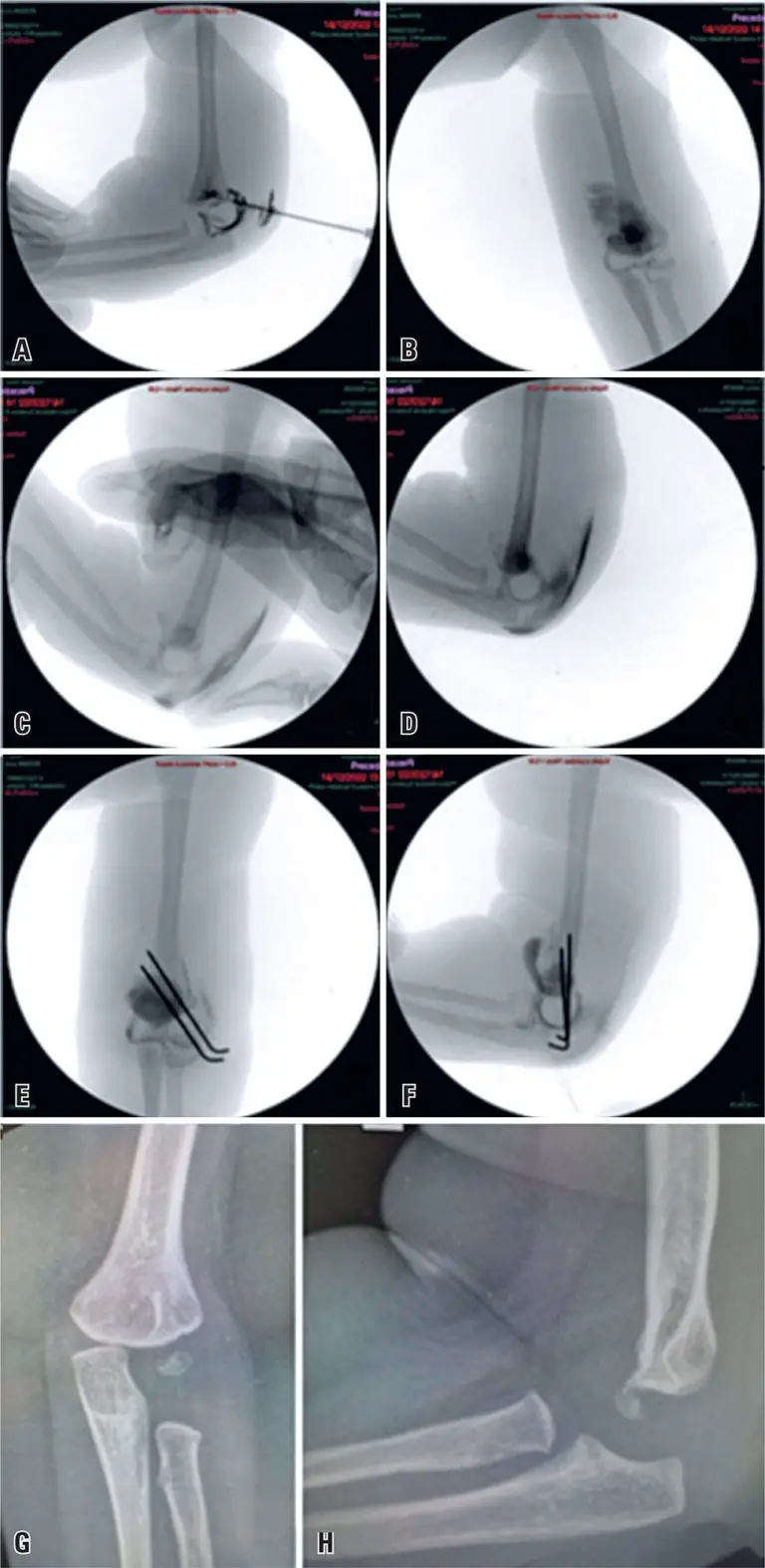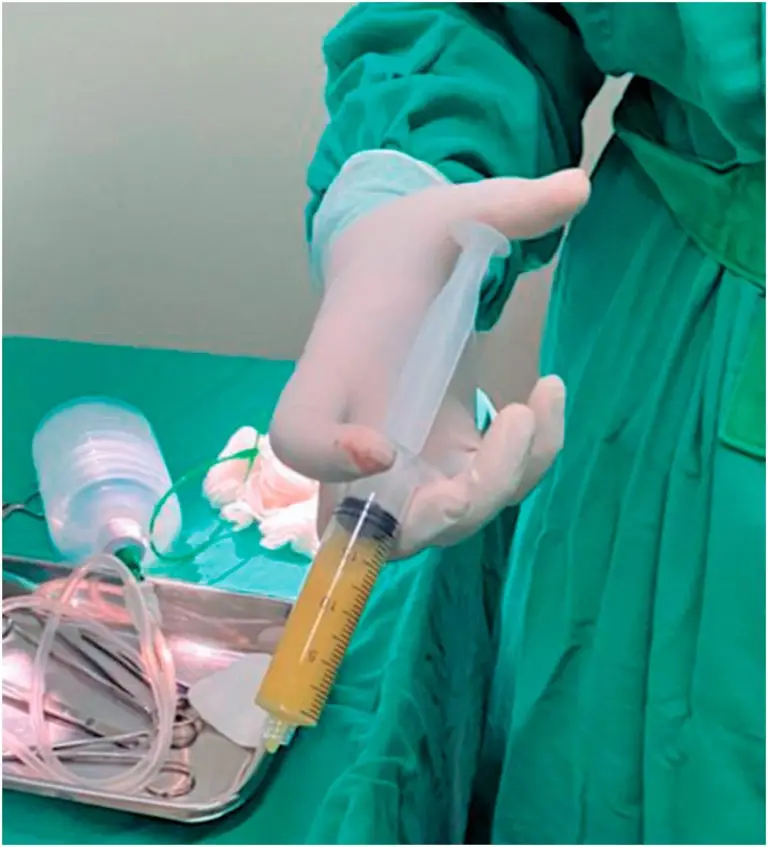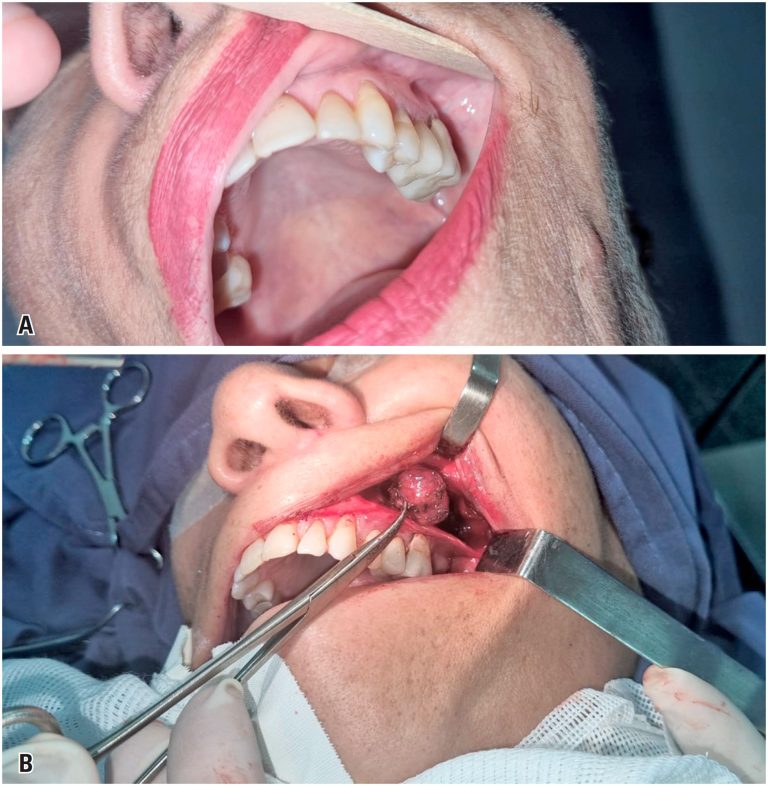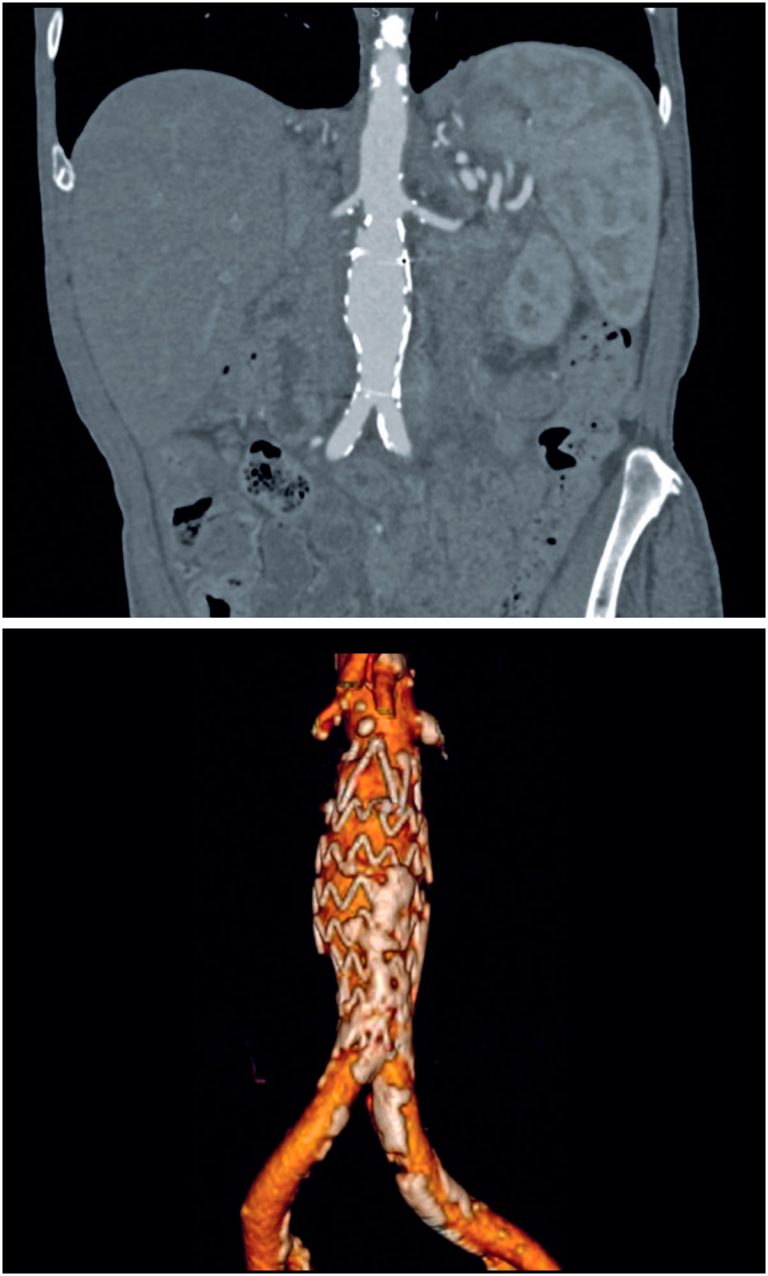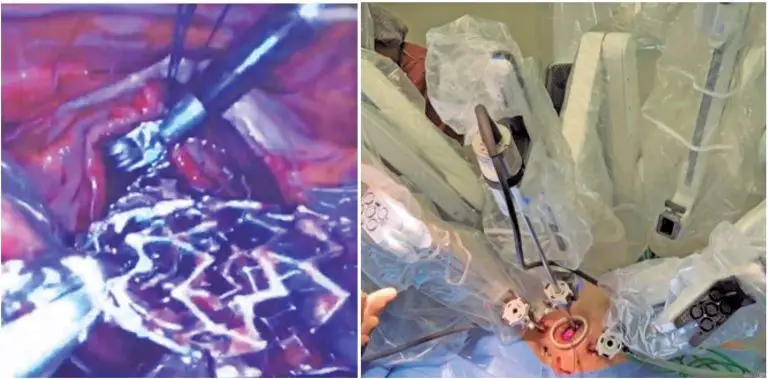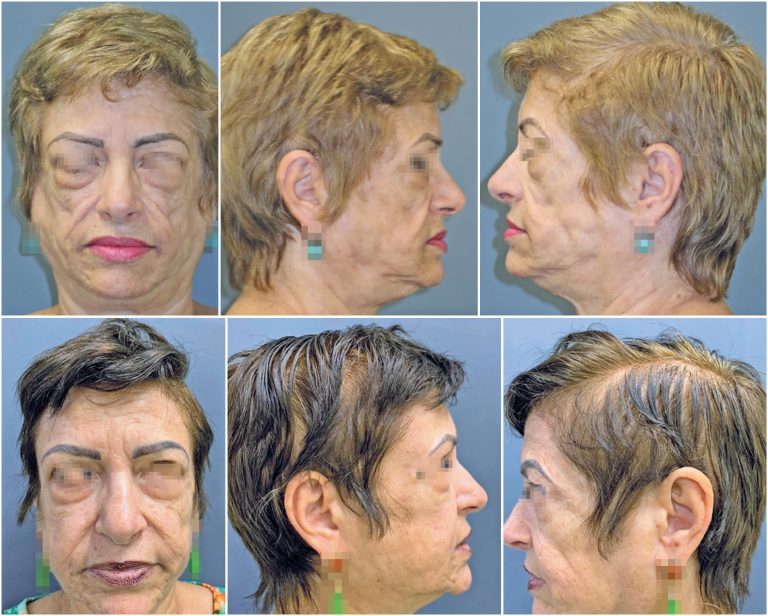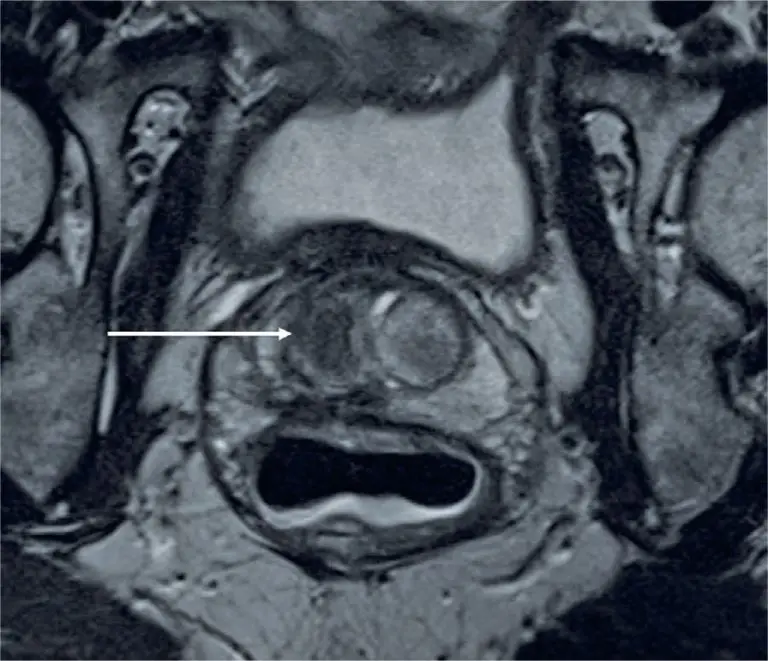22/nov/2024
Epiphyseal displacement of the distal humerus in a neonate: a case report
DOI: 10.31744/einstein_journal/2024RC0868
ABSTRACT Epiphyseal displacement of the distal humerus is rare and difficult to diagnose. In addition, the literature on the prognosis and treatment is limited. Here, we present a case of distal humeral physeal separation with significant displacement in a neonate. A favorable outcome was obtained following closed reduction and percutaneous fixation with Kirschner wires assisted by arthrography. This report adds valuable information on this subject to the existing literature.
Palavras-chave: Birth injuries; Epiphysis; Humerus; Troca materno-fetal; Joint dislocations
22/nov/2024
Percutaneous radiofrequency ablation of an actively bleeding renal angiomyolipoma
DOI: 10.31744/einstein_journal/2024RC1008
ABSTRACT We report a case of computed tomography-guided percutaneous radiofrequency ablation of a bleeding renal angiomyolipoma. Radiofrequency ablation was performed as an alternative to partial nephrectomy and super-selective renal artery embolization for ruptured renal angiomyolipoma with slow persistent bleeding in a patient with elevated serum creatinine levels and other comorbidities. Computed tomography-guided radiofrequency ablation successfully stopped the active hemorrhage and did not affect long-term renal function during the 3-year follow period. No complications were associated with the procedure. Radiofrequency ablation […]
Palavras-chave: Angiomyolipoma; Catheter ablation; Hemorragia; Kidney neoplasms; Radiofrequency ablation; X-ray computed tomography
22/nov/2024
Nephropulmonary fistula with coralliform stone migration into the thorax: a case report
DOI: 10.31744/einstein_journal/2024RC1220
ABSTRACT A nephropulmonary fistula is a rare complication of a non-functioning kidney, associated with a history of infection. Medical literature describes it as an adult disease in the pre-antibiotic era, and nowadays, is a rare complication. This study reports the case of a patient with nephrolithiasis who developed a nephropulmonary fistula resulting in the migration of renal coralliform stones to the lung parenchyma. The treatment included posterior mini-thoracotomy with partial costectomy of the 9th right costal arch, pneumonotomy for the […]
Palavras-chave: Coralliform stone; Hemotórax; Fistula; Rim; Lung abscess; Migration; Nefrolitíase; Nephropulmonary fistula
21/nov/2024
Point-of-care ultrasonography for diagnosis of purulent pericarditis postappendectomy: a case report
DOI: 10.31744/einstein_journal/2024RC0962
ABSTRACT Purulent pericarditis is rare condition in the modern era of antibiotics. However, it is a serious condition as it has an accelerated progression and is difficult to diagnose due to its nonspecific clinical presentation, resulting in high mortality. Herein, we present a case in which a 36-year-old male patient with otherwise unremarkable medical history developed abdominal sepsis complicated by purulent pericarditis post-appendectomy. While the initial clinical presentation was not compatible with the classic signs of purulent pericarditis, the diagnosis […]
Palavras-chave: Apendicectomia; Cuidados críticos; Pericardial effusion; Pericardite; Suppuration; Ultrassonografia
21/nov/2024
Cavernous hemangioma in the masticatory space
DOI: 10.31744/einstein_journal/2024RC1106
ABSTRACT Hemangiomas are benign congenital vascular tumors that commonly arise in the head and neck regions. Although they present with indolent growth and involution in most cases, they can cause facial deformities. Hemangiomas have three subtypes: capillary, cavernous, and mixed. The cavernous type is most commonly observed on the lateral wall of the nose or the inferior turbinate. This report describes a case of cavernous hemangioma diagnosed in a rare location in the left retromaxillary masticatory space in a 67-year-old […]
Palavras-chave: acquired; Arteriovenous malformations; Hemangioma; Hemangioma cavernoso; Nose deformities; Turbinates; Neoplasias vasculares
21/nov/2024
Chronic spontaneous non-aneurysmal aortic rupture treated with endovascular surgery
DOI: 10.31744/einstein_journal/2024RC1113
ABSTRACT Spontaneous non-aneurysmal aortic rupture is rare and is usually attributed to penetrating aortic ulcers, infections, tumor infiltrations, or inflammatory and collagen diseases. Chronic rupture is infrequent but extremely rare in non-aneurysmal aortas, which makes diagnosis difficult because the absence of an aneurysm can mislead the physician to rule out rupture. Here, we describe the case of an 85-year-old male, who was undergoing oncological investigation for weight loss, inappetence, and back pain. Computed tomography and magnetic resonance imaging performed 3 […]
Palavras-chave: Idoso de 80 anos ou mais; Aneurysm; Aneurysm, false; Angiografia; Aorta, abdominal; Procedimentos endovasculares; Unidades de terapia intensiva; Imagem por ressonância magnética; Alta do paciente; Penetrating atherosclerotic ulcer; Mortalidade; Rupture; spontaneous; Tomografia computadorizada por raios X
06/nov/2024
Robotic cardiac surgery for removal of iliac venous stent embolized in the right cardiac chambers: a case report
DOI: 10.31744/einstein_journal/2024RC0943
ABSTRACT A 42-year-old female patient with a surgical history of iliac venous angioplasty with stenting developed dyspnea on exertion 9 months later. Chest computed tomography angiography revealed a fractured vascular stent in the right cardiac chamber. Doppler echocardiography confirmed that the stent was anchored by the tricuspid valve, causing mild obstruction of the right ventricular filling. The patient underwent robot-assisted cardiac surgery with stent removal, annuloplasty under general anesthesia, and cardiopulmonary bypass via an axillary incision. No sternotomy, cardioplegia, or […]
Palavras-chave: Angioplastia; Dyspnea; Procedimentos endovasculares; Procedimentos cirúrgicos minimamente invasivos; Robotic surgical procedures; Stents/adverse effects
06/nov/2024
Coexistent sickle cell anemia and autoimmune hemolytic anemia in two adolescents
DOI: 10.31744/einstein_journal/2024RC1105
ABSTRACT The development of alloantibodies or autoantibodies is a complication observed in sickle cell disease. Autoimmunization occurs in 7.6-12% of chronically or intermittently transfused patients with sickle cell disease; however, the clinical implications of autoAbs are unclear. Few studies have focused on pediatric sickle cell disease and autoimmune hemolytic anemia. Herein, we present the coexistence of sickle cell disease and autoimmune hemolytic anemia in two adolescent patients, focusing on their pathophysiology, diagnosis, clinical management, and outcomes.
Palavras-chave: Adolescente; Anemia,hemolytic,autoimmune; Anemia,sickle cell; Autoanticorpos; Autoimmunity
06/nov/2024
Treatment of facial lipodystrophy induced by a biologic agent (IPD-1): a literature review
DOI: 10.31744/einstein_journal/2024RC1111
ABSTRACT Agents that inhibit programmed cell death (IPD-1) in T lymphocytes are indicated for patients with advanced cancer. However, some individuals may develop endocrinological conditions, such as diabetes, thyroid dysfunction, and lipodystrophy, after treatment. This systematic review and case report of IPD-1 lipodystrophies describes a patient who received nivolumab treatment for advanced clear cell renal carcinoma and subsequently developed diabetes as well as facial and body lipodystrophy. The patient complained of social distress due to her facial appearance. We treated […]
Palavras-chave: Tecido adiposo; Apoptose; Carcinoma de células pequenas/quimioterapia; Diabetes mellitus tipo 2; Lipodystrophy; Nivolumab; renal cell; Linfócitos T; Thyroid gland
31/out/2024
Irreversible electroporation for prostate cancer: another promising focal therapy
DOI: 10.31744/einstein_journal/2024RC0779
ABSTRACT Radical treatment for prostate cancer is associated with significant morbidity. Percutaneous image-guided irreversible electroporation is a non-thermal ablative technique that has emerged as a valuable option. This study describes the case of a patient with prostate cancer who was successfully treated using irreversible electroporation. We report the case of a 72-year-old male patient who presented with elevated PSA (4.0ng/mL) during routine testing. Multiparametric magnetic resonance imaging of the prostate revealed a 0.8 cm lesion in the posterolateral aspect of […]
Palavras-chave: Ablation techniques; interventional; Irreversible electroporation therapy; Multiparametric magnetic resonance imaging; Neoplasias da próstata; Radiology


